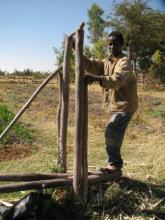Ethiopia: Manual well drilling
Ethiopia: Manual well drilling
| Title | Ethiopia: Manual well drilling |
| Publication Type | Study report |
| Year of Publication | Submitted |
| Publication Language | eng |
| Abstract | The case study Manual well drilling: an alternative for shallow groundwater development for multiple use services (MUS) looks into the features of manual well drilling in Ethiopia and the costs and benefits. Manual drilling is a fast and relatively low-cost method of accessing shallow groundwater for multiple uses. |
| Citation Key | 510 |
| Full Text | The case study Manual well drilling: an alternative for shallow groundwater development for multiple use services (MUS) looks into the features of manual well drilling in Ethiopia and the costs and benefits. Manual drilling is a fast and relatively low-cost method of accessing shallow groundwater for multiple uses. There is a large variation in cost between the enterprise or organisations involved, and diameter. Manual drilling is normally cheaper than hand digging. Reasons are due to time taken and the lower cost of lining. Initially, promotion and distribution of manually drilled wells was set up for irrigation, but in practice people use these wells for various purposes, as they are convenient. The smaller diameter well and its covering slab prevent inflow from dirty surface water. The case study is part of the MUStRAIN case study series in which the uptake of Multiple Use Services (MUS) in different contexts within Ethiopia is being documented. The case studies analyse cost-benefit relations as well as opportunities and challenges for implementation of MUS. |

